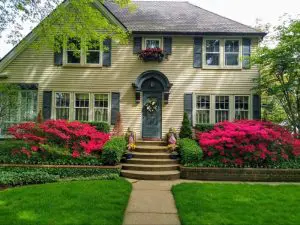Lighting is a fundamental aspect of interior design that goes beyond mere functionality. It has the power to transform the mood, ambiance, and perception of a space. While lighting serves practical purposes such as illumination and task performance, it can also be artfully employed to create an emotional and aesthetic impact in your home. This article delves into the realm of using lighting to set the mood in your living spaces, exploring the various techniques, fixtures, and considerations that can elevate your home’s atmosphere.
Understanding the Role of Lighting
Lighting is a versatile tool that can influence the way we perceive our surroundings. The color temperature, intensity, and direction of light play a significant role in creating different moods. Warm, soft lighting can evoke feelings of coziness and relaxation, while bright, cool lighting can promote alertness and focus. By harnessing these elements, you can tailor the ambiance of each room to suit its intended purpose and the emotional response you want to evoke.
Layered Lighting
To create a dynamic and immersive environment, interior designers often employ layered lighting. This involves combining different types of lighting sources to achieve balance and depth in a space. The three primary layers of lighting are:
Ambient Lighting: This is the general, overall illumination that sets the tone for a room. It can come from sources like ceiling-mounted fixtures, chandeliers, or recessed lighting.
Task Lighting: Task lighting is directed illumination that helps with specific activities like reading, cooking, or working. Desk lamps, pendant lights over a kitchen island, and under-cabinet lighting are common examples.
Accent Lighting: Accent lighting adds drama and focal points to a room by highlighting architectural features, artwork, or decorative elements. Wall sconces, track lighting, and spotlights are often used for accent lighting.
Setting the Mood
Different rooms call for different moods, and lighting can be tailored accordingly:
Living Room: Consider warm, soft lighting for the living room to create a cozy and inviting atmosphere. Floor lamps with adjustable shades, table lamps, and even string lights can add a touch of enchantment.
Dining Room: To foster an intimate and convivial ambiance in the dining area, opt for pendant lights or chandeliers above the table. Dimmable fixtures allow you to adjust the lighting level as needed.
Bedroom: Soft and soothing lighting is essential in the bedroom to promote relaxation. Bedside table lamps, wall-mounted sconces, and even hidden LED strips can help achieve a tranquil environment.
Kitchen: The kitchen benefits from a mix of ambient and task lighting. Under-cabinet lighting aids in food preparation, while pendant lights over the kitchen island add a touch of elegance.
Bathroom: Balanced lighting in the bathroom is crucial for grooming tasks. A combination of overhead lights, vanity lighting, and even backlit mirrors can provide ample illumination.
Home Office: Bright, task-focused lighting is vital in a home office to maintain productivity. Adjustable desk lamps and overhead fixtures with daylight-toned bulbs can help create an efficient workspace.
Lighting Fixtures and Styles
The type of lighting fixture you choose can significantly impact the mood you create:
- Chandeliers: Chandeliers can serve as exquisite focal points in large spaces. They come in a range of styles, from traditional crystal chandeliers to modern, minimalist designs.
- Pendant Lights: Pendant lights are versatile and can be used as task lighting or to add a touch of elegance to a room. They come in various shapes, sizes, and materials.
- Sconces: Wall sconces offer a gentle, diffused light that can create a cozy ambiance. They’re particularly effective for accent lighting.
- Floor Lamps: Floor lamps are excellent for adding both functional and decorative lighting. They come in a wide variety of styles, from classic to contemporary.
- Table Lamps: Table lamps can be placed on bedside tables, side tables, or desks to provide localized illumination and contribute to the room’s overall design.
- Track Lighting: Track lighting is versatile and can be directed to highlight specific areas or objects. It’s particularly useful for accenting artwork or architectural features.
Lighting Control
Technology has introduced smart lighting control systems that allow you to adjust the intensity and color of your lights to suit your desired mood. Smart bulbs and lighting systems can be controlled remotely via smartphone apps, voice commands, or programmed schedules. This level of control gives you the flexibility to adapt the lighting to different occasions and times of day.
Considerations for Lighting Design
When designing your lighting scheme, keep the following considerations in mind:
- Color Temperature: The color temperature of light affects the mood. Warm white (around 2700K) creates a cozy atmosphere, while cool white (around 5000K) promotes alertness.
- Dimmers: Install dimmer switches to have control over the brightness level of your lights. Dimming can create a range of atmospheres, from bright and vibrant to soft and relaxing.
- Light Layering: Balance ambient, task, and accent lighting for a well-rounded lighting design that caters to different activities and moods.
- Fixture Placement: Consider the layout of your room and the placement of fixtures to ensure even and effective lighting distribution.
- Natural Light: Incorporate natural light sources such as windows and skylights. Natural light can positively impact mood and reduce the need for artificial lighting during the day.
- Energy Efficiency: Opt for energy-efficient lighting solutions such as LED bulbs, which not only save energy but also offer a range of color temperatures.
Lighting is a powerful tool that goes beyond its functional purpose, influencing the emotional and aesthetic qualities of your living spaces. By understanding the role of lighting and employing techniques like layered lighting, you can create a variety of moods to suit different rooms and occasions. The choice of fixtures, color temperature, and lighting control systems further enhance your ability to shape the atmosphere in your home. Whether you seek cozy tranquility, vibrant energy, or any mood in between, the artful use of lighting can transform your living spaces into havens of ambiance and beauty.



